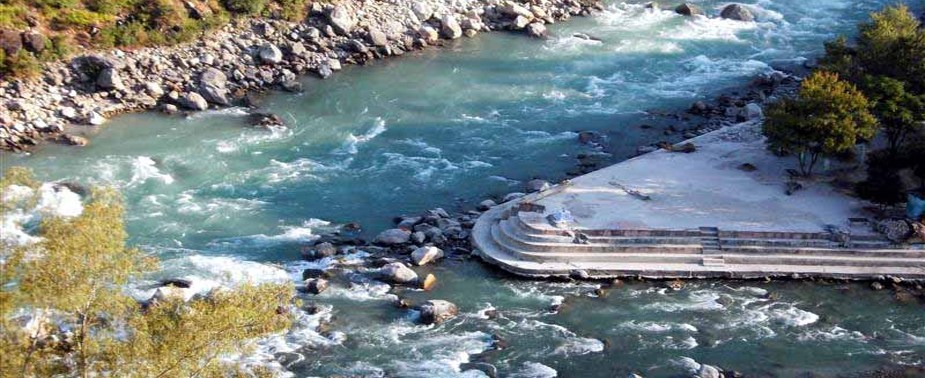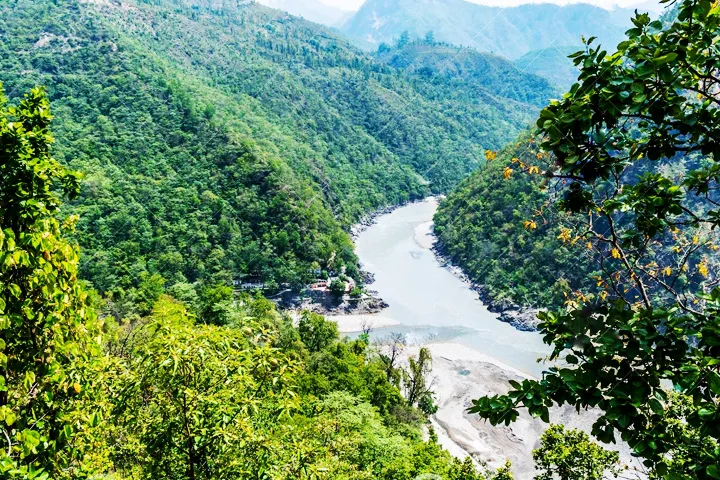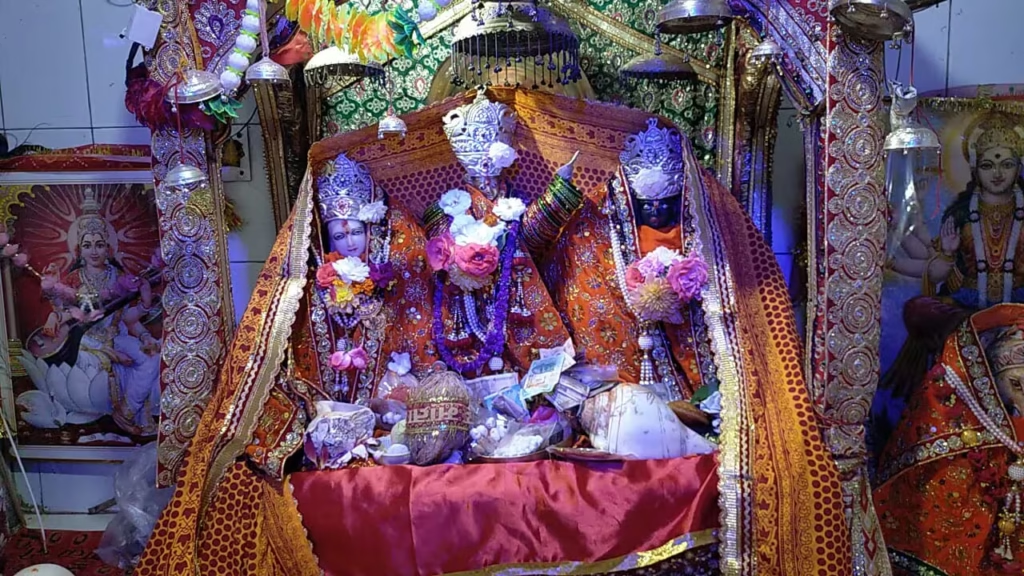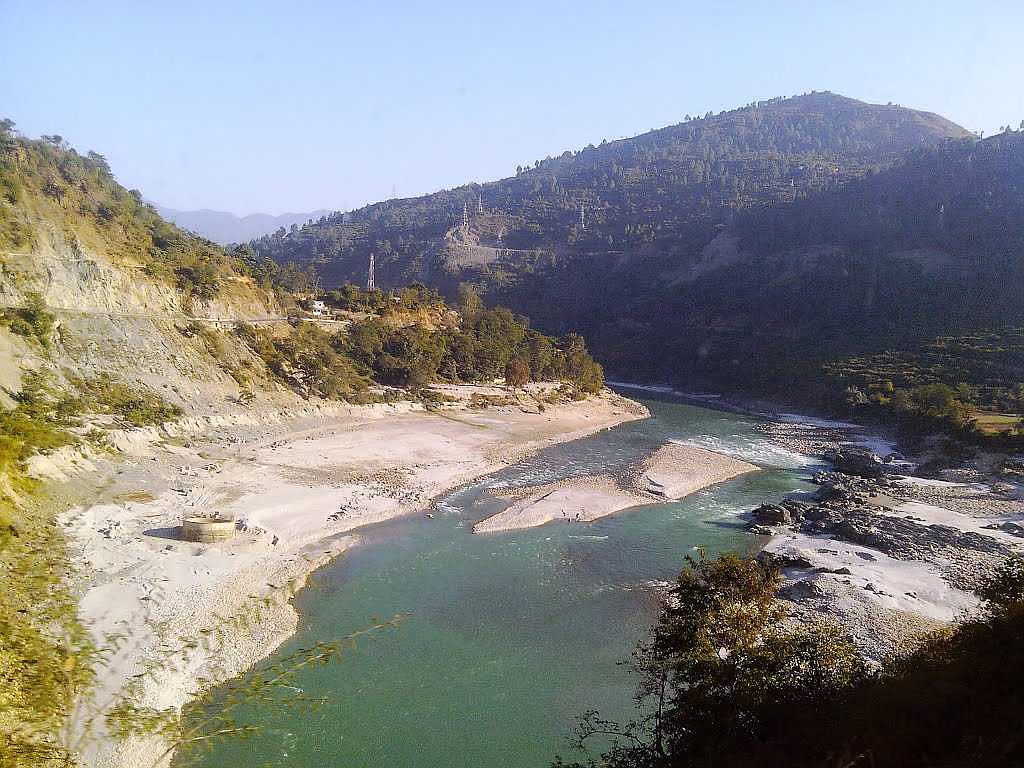Nandaprayag Uttarakhand, nestled in the Garhwal Himalayas of Uttarakhand, is a serene town where mythology, rivers, and mountains meet in perfect harmony. It is one of the Panch Prayag, the five sacred confluences of the Alaknanda River, which flows down from the glaciers of the Himalayas before joining the Bhagirathi to form the holy Ganga at Devprayag.
The town derives its name from King Nanda, a legendary figure in Hindu mythology, who is believed to have worshipped the rivers here. Over centuries, Nandaprayag has been revered by sages, pilgrims, and travelers seeking spiritual solace, natural beauty, or both. Its importance lies not just in its geography but in the timeless stories, rituals, and traditions associated with the confluence of the Alaknanda and Nandakini rivers.
Unlike the bustling towns of the Char Dham circuit, Nandaprayag maintains a peaceful rhythm. The soft murmur of the rivers, the rustle of the pine forests, and the distant snow-capped peaks create a sense of tranquility that has captivated visitors for generations.

Mythological Significance of Nandaprayag Uttarakhand
The spiritual essence of Nandaprayag is deeply intertwined with Hindu mythology. The town is believed to be where King Nanda performed yajnas and penances to please the gods. These acts of devotion gave the place its name and spiritual identity. Pilgrims visiting the Panch Prayag often pause here to pay homage before continuing their journey.
Legends also associate Nandaprayag with Lord Vishnu and Sage Narada. According to ancient texts, Narada performed penance here under the guidance of Vishnu, and the divine energy of the rivers made the town sacred. Many believe that bathing in the confluence cleanses sins and brings blessings of wisdom, strength, and peace.
The stories of kings, sages, and gods give Nandaprayag a rich mythological tapestry. Every riverbank, rock, and temple here carries echoes of devotion, creating a spiritual environment that feels both timeless and intimate.

The Alaknanda and Nandakini Rivers
The confluence of the Alaknanda and Nandakini rivers is the heart of Nandaprayag. The Alaknanda, flowing from the glaciers, is powerful and deep, while the Nandakini, smaller yet swift, merges to create a unified force of nature.
Observing the Confluence
Visitors can sit by the banks, watch the waters merge, and feel the unique energy of the place. The confluence is particularly mesmerizing during sunrise and sunset when the golden light reflects off the rivers, painting a scene that looks almost surreal.
Spiritual Practices
- Pilgrims perform rituals on the riverbanks, offering flowers, diyas, and prayers.
- Devotees often meditate to absorb the tranquil energy of the rivers.
- It is believed that prayers offered at this confluence are especially auspicious.

Temples and Sacred Sites in Nandaprayag
Visiting Nandaprayag is an experience where each temple tells a story. From the legends of ancient sages to the worship of powerful deities, every shrine here reflects centuries of faith, culture, and tradition.
Nanda Devi Temple
Arguably the most significant temple in the region, Nanda Devi Temple is dedicated to the goddess Nanda Devi, who is considered a manifestation of Shakti, the feminine energy that protects the Himalayas. The temple is perched on a hill overlooking the rivers, offering panoramic views that blend natural beauty with spiritual calm.
Pilgrims visit this temple to seek blessings for health, prosperity, and protection. The temple’s serene atmosphere allows visitors to meditate and reflect while watching the rivers merge below. Legend says that the goddess herself chose this spot to reside, ensuring the safety and spiritual sanctity of the region.
The temple’s architecture is simple yet elegant, made from locally sourced stone and wood, which harmonizes with the surrounding landscape. During festivals, especially Navratri, devotees gather in large numbers, chanting hymns and offering prayers, creating an atmosphere filled with devotion and energy.

Narad Temple
Another important spiritual site is the Narad Temple, associated with the revered sage Narada. According to tradition, Narada meditated at Nandaprayag, performing penance and seeking divine guidance. The temple honors his devotion and is a place where visitors often come to seek wisdom and clarity.
The temple is small but vibrant, surrounded by the gentle sound of flowing rivers. Pilgrims light oil lamps, offer flowers, and chant mantras, creating a rhythm of devotion that feels timeless. The spiritual energy here is palpable, and many visitors report a sense of inner calm and inspiration after spending time at the temple.

Bhairavnath Temple
Bhairavnath Temple is another sacred site in Nandaprayag, dedicated to Lord Bhairav, a fierce form of Lord Shiva. While the temple may appear modest, it holds great importance for devotees who visit seeking protection from obstacles and guidance during difficult times.
The temple’s location near the confluence enhances its significance. Many locals believe that worshipping here not only grants spiritual strength but also brings a sense of courage and determination, much like the flowing rivers that meet at Nandaprayag.
Local Shrines and Sacred Corners
Beyond the major temples, Nandaprayag is dotted with numerous smaller shrines and sacred corners. These sites may not have elaborate architecture, but they carry immense spiritual weight, as they have been maintained and worshipped by local communities for generations.
Highlights of Local Shrines:
- Small shrines along the riverbank where villagers perform daily rituals
- Devotional spots dedicated to local deities and nature spirits
- Meditation corners created by wandering sages or hermits
These sacred spaces offer quiet reflection away from the crowds and allow travelers to connect with the spiritual essence of the region at their own pace.
Mythological Associations of the Temples
The temples in Nandaprayag are more than structures; they are gateways to the past. Each shrine reflects stories from Hindu mythology, connecting the town to epic tales of courage, devotion, and divine intervention.
For instance:
- Nanda Devi Temple links to the goddess who protects the Himalayas and blesses her devotees.
- Narad Temple celebrates the sage who traveled across the universe, spreading wisdom and devotion.
- Bhairavnath Temple reflects the energy of Lord Shiva in his protective, powerful form.
Visitors often find that spending time at these temples is like walking through the pages of an epic, where legends live in the stones, rivers, and forests surrounding them.
Spiritual Practices and Rituals
The temples of Nandaprayag are not merely historical monuments; they are living centers of worship where daily rituals continue uninterrupted.
Common Practices Include:
- Morning and Evening Aarti – Devotees gather to sing hymns and offer light to the deities.
- River Offerings – Flowers, diyas, and small coins are floated on the Alaknanda and Nandakini rivers as a sign of devotion.
- Meditation and Chanting – Many pilgrims spend hours in quiet reflection, absorbing the energy of the confluence and temple surroundings.
- Festival Celebrations – During key Hindu festivals such as Navratri, Mahashivratri, and local harvest festivals, the temples become centers of communal worship and cultural celebrations.
These practices keep the spiritual energy alive and make every visit feel immersive and meaningful.
Cultural Significance of the Temples
The temples in Nandaprayag are integral to the cultural identity of the town. They serve not only as centers of worship but also as spaces for social gatherings, storytelling, and the preservation of local traditions.
Villagers participate actively in temple activities, maintaining rituals, preparing offerings, and celebrating festivals together. This blend of spirituality and community life creates a warm and welcoming environment for visitors. Travelers often find themselves drawn into local stories, songs, and traditions, gaining a deeper appreciation for the heritage of Garhwal.
Visiting the Temples
Visiting the temples of Nandaprayag is a journey of both the heart and mind. Here are a few tips to make the experience more meaningful:
- Arrive Early – Morning visits offer a peaceful atmosphere before the arrival of larger crowds.
- Dress Respectfully – Modest clothing shows respect for local traditions.
- Engage with Locals – Learning about the rituals and stories from residents enhances your understanding of the spiritual significance.
- Take Time for Reflection – Sit by the riverbanks, meditate, or simply observe the devotion around you.
By approaching the temples with mindfulness, visitors can experience not just the architecture or rituals but also the profound sense of calm and connection that makes Nandaprayag unique.
Natural Beauty Surrounding Nandaprayag
Nandaprayag is more than a spiritual hub; it is a paradise for nature lovers. The town is surrounded by pine forests, terraced fields, and snow-capped mountains. The rivers provide not only spiritual cleansing but also scenic beauty that inspires photography, painting, and poetry.
Flora and Fauna
Flora of Nandaprayag
The flora around Nandaprayag is diverse, ranging from dense pine and deodar forests to alpine meadows at higher altitudes. The combination of rivers, fertile soil, and varying altitudes allows plants of different types and sizes to thrive.
Forests and Trees
The lower hills and valleys of Nandaprayag are dominated by pine, oak, and deodar trees, providing both shade and habitat for wildlife. Deodar, known as the Himalayan cedar, is considered sacred in local traditions and often features in rituals and temple surroundings.
Other common trees include:
- Chir pine – Abundant in the lower slopes, offering a deep green contrast to the snow-capped peaks.
- Oak trees – Known for their strength and long life, these trees add to the dense canopy of the forests.
- Rhododendron – Blooming in spring, these trees create vivid splashes of red, pink, and white across the hillsides.
Alpine Flora
At higher elevations near Nandaprayag, alpine plants thrive in cooler conditions. These include various medicinal herbs, wildflowers, and shrubs, many of which are used by locals for traditional remedies. Some notable alpine species are:
- Himalayan bellflower
- Edelweiss
- Various types of primulas and gentians
The seasonal changes bring a dynamic transformation to the flora. In spring, the hillsides explode into color with blooming flowers, while in autumn, the forests turn into shades of gold and amber. The changing seasons make Nandaprayag a beautiful place to visit at any time of the year.
Fauna of Nandaprayag
The forests, rivers, and valleys of Nandaprayag are home to a variety of wildlife. While many species are elusive, careful observation and guided treks can reveal fascinating glimpses of Himalayan fauna.
Mammals
The surrounding forests shelter mammals that are native to the Garhwal region:
- Himalayan black bear – Typically found in dense forests, they play a crucial role in seed dispersal.
- Leopard and snow leopard – Rare and shy, these predators are indicators of a healthy ecosystem.
- Himalayan langur and macaques – Frequently seen near forested areas and temple surroundings.
- Barking deer and goral – Graceful herbivores that roam the slopes in search of food.
Local communities respect these animals, often sharing stories and folklore about their interactions, highlighting the harmony between humans and wildlife in the region.
Birds
Birdwatchers find Nandaprayag particularly fascinating due to the diversity of Himalayan birds. The area is a paradise for both resident and migratory species:
- Himalayan monal – Known for its vibrant plumage, this bird is a visual delight in spring and summer.
- Kalij pheasant – Often found in dense undergrowth, adding movement and color to the forests.
- Eagles and vultures – Soaring above the valleys, these birds of prey symbolize freedom and vigilance.
- Various songbirds – Sparrows, warblers, and bulbuls fill the air with melodies during early mornings.
The presence of rivers attracts waterbirds as well, such as kingfishers and herons, adding diversity to the avian population.
Aquatic Life
The Alaknanda and Nandakini rivers support a variety of aquatic species. Fish like trout and mahseer thrive in the cold, fast-flowing waters. These rivers are also home to smaller aquatic creatures, forming an intricate ecosystem that sustains life on both sides of the riverbanks.
Medicinal and Cultural Plants
Nandaprayag’s forests are rich in plants used in traditional medicine. Local healers and villagers often use herbs, roots, and leaves to prepare remedies for common ailments, reflecting centuries of knowledge about the natural world.
Some common medicinal plants include:
- Brahmi – Known for enhancing memory and cognitive health.
- Ashwagandha – A root with adaptogenic properties, often used in stress relief.
- Tulsi – Sacred and medicinal, commonly used for respiratory and immunity benefits.
The integration of medicinal plants into daily life shows the deep connection between the local community and the environment, blending spirituality with practical knowledge of nature.
Ecotourism and Nature Exploration
Nandaprayag is slowly emerging as a destination for ecotourism, offering travelers the chance to explore flora and fauna responsibly. Trekking, nature walks, and birdwatching are popular activities for visitors who want to experience the region beyond its spiritual identity.
Recommended Experiences:
- Forest Treks – Guided walks through pine and deodar forests to observe flora and small mammals.
- Riverbank Exploration – Watching fish, birds, and seasonal blooms along the rivers.
- Wildflower Photography – Spring and summer bring a riot of colors perfect for photographers.
- Local Knowledge Tours – Interacting with villagers to learn about medicinal plants and traditional uses.
Such activities not only enrich the visitor’s experience but also promote conservation and respect for the delicate Himalayan ecosystem.
Things to Do in Nandaprayag
Nandaprayag offers a mix of spiritual, cultural, and natural experiences.
- Visit the Confluence – Sit by the Alaknanda and Nandakini rivers, absorb the energy, and meditate.
- Temple Tours – Explore Nanda Devi Temple, Narad Temple, and smaller shrines in the town.
- Trekking – The surrounding hills and valleys provide moderate trekking routes for adventure enthusiasts.
- Photography – From the rivers to the mountains, every corner is picture-perfect.
- Local Interaction – Engage with villagers to learn about local traditions, cuisine, and crafts.
How to Reach Nandaprayag
By Air
The nearest airport is Jolly Grant Airport in Dehradun, about 160 kilometers away. From the airport, travelers can hire taxis or use buses to reach Nandaprayag.
By Rail
The nearest railway stations are Rishikesh (142 km) and Haridwar (165 km). From there, regular bus and taxi services connect to the town.
By Road
Nandaprayag lies on National Highway 7, which connects major towns of Uttarakhand. Regular buses, shared jeeps, and taxis make the town accessible from Rishikesh, Devprayag, Rudraprayag, and Joshimath.
Travelers should note that mountain roads require careful driving, and it is advisable to start journeys early in the day.
Best Time to Visit
- April to June – Pleasant weather, ideal for sightseeing and river activities.
- July to September – Monsoon brings lush greenery but can cause landslides.
- October to November – Clear skies, perfect for photography and trekking.
- December to February – Cold, quiet, and ideal for meditation, though heavy woolens are necessary.
Nearby Attractions of Nandaprayag
- Karnaprayag – Confluence of Alaknanda and Pindar rivers, 20 km away.
- Rudraprayag – Confluence of Alaknanda and Mandakini, 45 km away.
- Chamoli – District headquarters with cultural and natural significance, 18 km away.
- Joshimath – Spiritual hub and base for Auli skiing, 95 km away.
- Valley of Flowers – UNESCO World Heritage Site, around 120 km away.
- Hemkund Sahib – Sacred Sikh pilgrimage site, near the Valley of Flowers.
FAQs for Nandaprayag
- Where is Nandaprayag located?
Nandaprayag is in Chamoli district of Uttarakhand, at the confluence of the Alaknanda and Nandakini rivers. - Why is Nandaprayag famous?
It is one of the Panch Prayag and is known for its spiritual importance and scenic Himalayan setting. - What rivers meet at Nandaprayag?
The Alaknanda and Nandakini rivers converge here. - What does the name Nandaprayag mean?
It is named after the Nandakini River and signifies “the confluence of Nanda.” - What are the main temples in Nandaprayag?
The Narasingh Temple and Koteshwar Temple are key religious sites in Nandaprayag. - What is the best time to visit Nandaprayag?
March to June and September to November are ideal for sightseeing and pilgrimage. - How to reach Nandaprayag?
Accessible by road from Rishikesh, Rudraprayag, and Karnaprayag. The nearest railway station is Rishikesh. - Is Nandaprayag part of Panch Prayag?
Yes, it is the fourth confluence in the Panch Prayag circuit of Uttarakhand. - What myths are associated with Nandaprayag?
Legends mention that Adi Shankaracharya visited this confluence to perform rituals and prayers. - What activities can tourists do in Nandaprayag?
Visitors can explore temples, enjoy riverside views, and use it as a stopover while traveling the Char Dham or Panch Prayag route.


